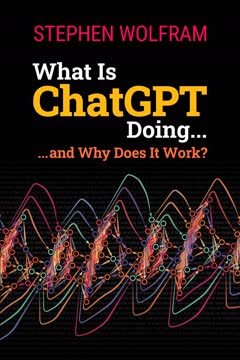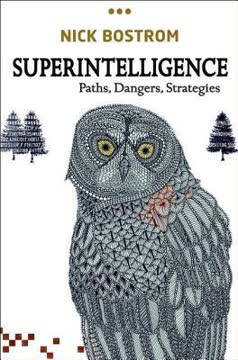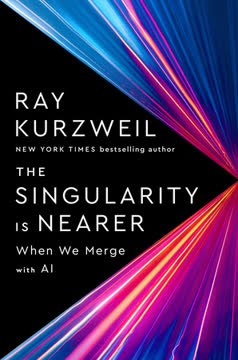Key Takeaways
1. Networks have shaped history more than hierarchies
No man is an island.
Networks are fundamental. Human beings are inherently social creatures, forming complex webs of relationships that have shaped the course of history. These networks have often been more influential than formal hierarchical structures like governments or corporations. From the spread of religions to the diffusion of technological innovations, networks have been the primary drivers of change.
Networks vs. hierarchies. Throughout history, there has been a constant tension between networks and hierarchies. Hierarchies, with their clear chains of command, have often seemed more powerful and stable. However, networks, with their flexibility and ability to rapidly spread information and ideas, have frequently been the true agents of transformation. This book argues that many historical events and trends can be better understood by examining the interplay between networks and hierarchies.
Key network characteristics:
- Adaptability
- Rapid information spread
- Decentralized structure
- Ability to bypass traditional power structures
2. The Illuminati: A case study in network power and myth
The Illuminati therefore need to be understood not as an omnipotent conspiracy, sustained by sinister means over more than two centuries, but as a revealing footnote to the history of the Enlightenment.
Myth vs. reality. The Illuminati, a secret society founded in Bavaria in 1776, exemplifies both the power of networks and how they can be misunderstood. While the group's actual influence was limited and short-lived, its legend grew far beyond reality, becoming a persistent conspiracy theory.
Network dynamics. The Illuminati's brief success demonstrates key aspects of network dynamics:
- Rapid growth through existing social structures (Freemasonry)
- Ability to attract influential members
- Vulnerability to exposure and suppression by hierarchical powers
The Illuminati's enduring myth also shows how networks can take on a life of their own in popular imagination, often divorced from historical facts. This persistence highlights the human tendency to see coordinated action where there may only be loosely connected events or ideas.
3. Printing and Protestantism: Networks that challenged hierarchies
Without Gutenberg, Luther might well have become just another heretic whom the Church burned at the stake, like Jan Hus.
Information revolution. The invention of the printing press by Johannes Gutenberg in the mid-15th century was a pivotal moment in history. It allowed for the rapid dissemination of ideas, challenging the monopoly on information held by traditional hierarchies like the Catholic Church.
The Reformation as a network phenomenon. Martin Luther's Protestant Reformation was made possible by the printing press. His ideas spread rapidly through printed pamphlets and translations of the Bible, creating a network of reform-minded individuals across Europe.
Key impacts of printing on the Reformation:
- Rapid spread of Luther's writings
- Increased literacy and access to religious texts
- Creation of Protestant communities across national borders
- Undermining of traditional religious authority
This period demonstrates how new communication technologies can empower networks to challenge established hierarchies, a pattern that would repeat throughout history.
4. Empires as networks: The rise of global trade and conquest
Like a church and like the Bolshevik party before it, the Nazi party became more hierarchical as it grew.
Imperial networks. The great empires of the early modern period, such as the Spanish, Portuguese, and British, were not just hierarchical structures but complex networks of trade, information, and cultural exchange. These networks allowed relatively small European nations to exert influence over vast territories.
Adaptability and control. Successful empires like the British managed to balance hierarchical control with network adaptability. They often relied on local elites and existing power structures, creating a flexible system of indirect rule. This approach allowed them to govern vast territories with relatively few personnel.
Key aspects of imperial networks:
- Global trade routes
- Information gathering and intelligence networks
- Cultural and linguistic exchanges
- Scientific and technological diffusion
The rise and fall of empires illustrate how networks can both empower and undermine hierarchical structures, a dynamic that continues to shape global politics and economics.
5. The industrial revolution: A triumph of networked innovation
The networks of notables – Honoratioren – whose families had dominated local power structures for generations came under sustained attacks not only from new national political parties, but also from growing bureaucracies at the national, regional and local level.
Innovation networks. The Industrial Revolution was not just about new technologies, but about the networks of inventors, entrepreneurs, and financiers that made rapid innovation possible. These networks allowed for the sharing of ideas and the pooling of resources necessary for large-scale industrial development.
Disruption of traditional hierarchies. The rise of industrial capitalism disrupted traditional social hierarchies based on land ownership and hereditary titles. New networks of industrialists, bankers, and skilled workers gained increasing influence, challenging the old order.
Key features of industrial networks:
- Scientific societies and professional associations
- Patent systems for sharing and protecting innovations
- Financial networks for funding new ventures
- Labor networks (trade unions) as a response to industrialization
The Industrial Revolution demonstrates how networks can drive rapid social and economic change, often outpacing the ability of traditional hierarchies to adapt.
6. World Wars and Cold War: The pinnacle of hierarchical power
The twentieth century was also a time of plagues – and of pipers.
Total mobilization. The World Wars represented the height of hierarchical power, with nation-states mobilizing entire populations and economies for conflict. This period saw the rise of totalitarian regimes that attempted to exert unprecedented control over society.
Cold War structures. The Cold War era continued this trend, with superpower blocs organized into rigid hierarchies. However, even in this seemingly bipolar world, networks played crucial roles, from espionage rings to dissident movements.
Characteristics of mid-20th century hierarchical power:
- Centralized economic planning
- Mass conscription and total war
- Propaganda and information control
- Nuclear deterrence and superpower blocs
While hierarchies seemed dominant, this period also saw the seeds of their undoing, as new technologies and social movements began to challenge centralized control.
7. The Internet Age: The resurgence of networks over hierarchies
The first wave of liberation was economic and social and was driven by the market revolution ... The second wave was political and was driven by the communications revolution.
Digital disruption. The rise of the Internet and digital technologies has dramatically shifted the balance of power back towards networks. These technologies have enabled unprecedented connectivity and information sharing, challenging traditional hierarchical structures in business, politics, and society.
Decentralization and democratization. The Internet has empowered individuals and small groups to have outsized influence, bypassing traditional gatekeepers. This has led to both positive innovations and new challenges, from crowdsourcing to the spread of misinformation.
Key aspects of the Internet Age:
- Rapid information dissemination
- Peer-to-peer communication and collaboration
- Rise of platform economies
- Challenges to traditional media and institutions
The Internet Age represents a new phase in the ongoing tension between networks and hierarchies, with far-reaching implications for governance, economics, and social organization.
8. Financial networks: Both stabilizing and destabilizing forces
The central puzzle of British history in the age of industrialization is why economic revolution was not associated with political revolution.
Global financial integration. The development of global financial networks has been a double-edged sword. On one hand, these networks have facilitated trade, investment, and economic growth. On the other, they have created new vulnerabilities and the potential for rapid contagion during crises.
Regulation challenges. The complexity and speed of modern financial networks have often outpaced the ability of hierarchical regulatory structures to effectively govern them. This has led to recurring crises and debates about how to balance financial innovation with stability.
Key features of financial networks:
- Interconnected global markets
- High-speed electronic trading
- Complex financial instruments
- Systemic risk and contagion effects
The evolution of financial networks illustrates both the power of networked systems to create value and their potential to generate instability when not properly managed or understood.
9. Terrorism and counter-terrorism: A battle of networks
Al-Qaeda was in fact relatively weak. Precisely its covert, anti-social character meant that it could not easily recruit and train new people.
Networked threats. Modern terrorism, exemplified by groups like Al-Qaeda, operates as decentralized networks rather than traditional hierarchical organizations. This structure makes them resilient and adaptable, posing new challenges for counter-terrorism efforts.
Network-centric warfare. In response, military and intelligence agencies have had to adapt, developing more networked approaches to counter these threats. This has led to a focus on information sharing, Special Forces operations, and cyber warfare.
Key aspects of the network battle against terrorism:
- Decentralized terrorist cells
- Social media recruitment and propaganda
- Financial networks for funding terrorism
- Intelligence sharing and big data analysis for counter-terrorism
The ongoing struggle against terrorism highlights how both threats and responses in the modern world increasingly take networked forms, challenging traditional notions of warfare and security.
10. Social media: The largest human networks ever created
Facebook was not originally created to be a company. It was built to accomplish a social mission – to make the world more open and connected.
Unprecedented connectivity. Social media platforms like Facebook have created the largest and most interconnected human networks in history. These platforms have transformed how people communicate, share information, and form communities.
Power and responsibility. The immense scale and influence of social media networks raise new questions about privacy, information control, and the responsibilities of platform owners. These networks have become de facto public spaces, yet they are owned and controlled by private companies.
Key impacts of social media networks:
- Global information sharing in real-time
- Formation of online communities and movements
- New forms of political organization and activism
- Challenges to traditional media and information gatekeepers
Social media represents both the potential and the challenges of large-scale human networks, illustrating how technology can amplify both connection and division.
11. The future: Balancing network dynamism with hierarchical stability
I think we did the right thing given the constraints that we had. I hope we get through this week ... we shouldn't be in a position where we're betting the economy on one or two institutions.
Ongoing tension. The future will likely continue to see a dynamic interplay between networks and hierarchies. While networks offer innovation, flexibility, and rapid adaptation, hierarchies provide stability, coordination, and accountability.
Hybrid systems. Successful organizations and societies will likely need to find ways to combine the strengths of both networks and hierarchies. This may involve new forms of governance, business models, and social organization that can harness the power of networks while maintaining necessary structure and oversight.
Challenges for the future:
- Regulating global digital networks
- Balancing innovation with stability in finance and technology
- Addressing inequality in networked economies
- Maintaining democratic accountability in a networked world
The ongoing evolution of networks and hierarchies will shape how we address major global challenges, from climate change to economic development to political governance.
Last updated:
FAQ
What's The Square and the Tower about?
- Exploration of Networks and Hierarchies: The book examines the historical interplay between networks and hierarchies, showing how networks often disrupt established power structures.
- Historical Context: Ferguson traces the evolution of networks from the Illuminati to modern social media, illustrating their influence on significant historical events.
- Technological Impact: The book discusses how technologies like the printing press and the internet have empowered networks to challenge traditional hierarchies.
Why should I read The Square and the Tower?
- Insightful Analysis: Ferguson provides a compelling analysis of networks and their historical significance, valuable for those interested in history, sociology, and political science.
- Relevance to Modern Society: The themes are highly relevant today, as social media and digital networks continue to reshape power dynamics.
- Engaging Writing Style: Ferguson's narrative combines historical anecdotes with rigorous analysis, making complex ideas accessible and enjoyable.
What are the key takeaways of The Square and the Tower?
- Networks vs. Hierarchies: Networks can disrupt and challenge established power structures, a recurring theme throughout history.
- Importance of Weak Ties: "Weak ties" in networks facilitate the spread of ideas and information, connecting disparate groups.
- Historical Examples: Ferguson uses examples like the Illuminati and the Reformation to illustrate how networks have influenced major events.
What are the best quotes from The Square and the Tower and what do they mean?
- Hierarchy Limitations: "When hierarchy is the order of the day, you are only as powerful as your rung on the organizational ladder." This highlights the limitations of hierarchical power.
- Historical Significance of Networks: "Networks can be found in nearly all human history and that they are much more important than most history books lead their readers to believe." This challenges the traditional focus on hierarchies.
- Power of Silence: "The strength would depart from me; but while I held my peace, I held my foe in an invisible mesh." This reflects the strategic power of networking.
How does Niall Ferguson define networks and hierarchies in The Square and the Tower?
- Definitions: Networks are informal, decentralized structures facilitating connections, while hierarchies are formal organizations with clear authority lines.
- Interplay Between the Two: Networks can disrupt and challenge hierarchical power, with both forms coexisting and influencing each other.
- Historical Examples: Ferguson illustrates how networks have emerged in response to hierarchical structures, such as during the Enlightenment.
How does The Square and the Tower relate to modern social media?
- Network Dynamics: Ferguson draws parallels between historical networks and social media, showing how both facilitate rapid information spread.
- Empowerment and Disruption: Social media empowers individuals and groups, leading to significant political and social movements.
- Risks and Vulnerabilities: While empowering, social media networks can also lead to misinformation and instability.
What role does technology play in the evolution of networks according to The Square and the Tower?
- Facilitating Connections: Technological advancements, especially in communication, have enabled rapid network formation and expansion.
- Changing Power Dynamics: Technology shifts power from traditional hierarchies to decentralized networks, impacting politics and economics.
- Emergence of New Networks: Social media exemplifies how technology creates new forms of social interaction and influence.
How does Ferguson connect networks to the rise of populism?
- Populist Movements: Populist movements arose in response to inequalities exacerbated by industrialization and immigration.
- Absorption by Established Parties: Many populist ideas were absorbed by mainstream parties, showing the fluidity of political ideologies.
- Inequality and Remedies: While populists identified inequality issues, their solutions often fell short, leading to more organized progressive movements.
How does The Square and the Tower address the concept of power?
- Power Dynamics: Ferguson explores how power is distributed within networks and hierarchies, challenging traditional notions.
- Influence vs. Authority: Influence can be exerted through networks, while authority is associated with hierarchies; both are powerful.
- Historical Examples: Figures like Henry Kissinger illustrate how individuals leverage networks to exert power.
What specific historical examples does Ferguson use in The Square and the Tower?
- Freemasons and Political Influence: The Freemasons operated as a powerful network influencing political decisions in the 18th and 19th centuries.
- Arab Spring: Social media networks facilitated the Arab Spring, mobilizing collective action against authoritarian regimes.
- ISIS and Terror Networks: ISIS's decentralized structure shows how modern terrorist organizations use networks to spread ideology.
How does The Square and the Tower relate networks to inequality?
- Complementary vs. Substitutive: Networks and markets can either exacerbate or reduce inequality, depending on their relationship.
- Globalization Effects: Globalization creates opportunities for well-connected individuals, marginalizing those without network access.
- Social Capital: Strong connections in networks can be leveraged for economic gain, entrenching inequality.
What is the significance of the title The Square and the Tower?
- Symbolic Representation: The title represents the tension between the public sphere (the square) and power structures (the tower).
- Historical Context: It frames the analysis of how societies organize themselves and the implications for power dynamics.
- Contemporary Relevance: The title encapsulates the central theme of understanding the interplay between networks and hierarchies.
Review Summary
The Square and the Tower receives mixed reviews. Some praise Ferguson's sweeping historical analysis of networks and hierarchies, finding it insightful and thought-provoking. Others criticize the book for being overly long, repetitive, and lacking focus. Many readers appreciate Ferguson's ability to synthesize complex ideas and present them accessibly, but some find his arguments forced or oversimplified. The book's coverage of historical events and their connection to network theory is generally well-received, though some readers question the originality of Ferguson's thesis or find his personal biases evident in the text.
Similar Books








Download PDF
Download EPUB
.epub digital book format is ideal for reading ebooks on phones, tablets, and e-readers.











